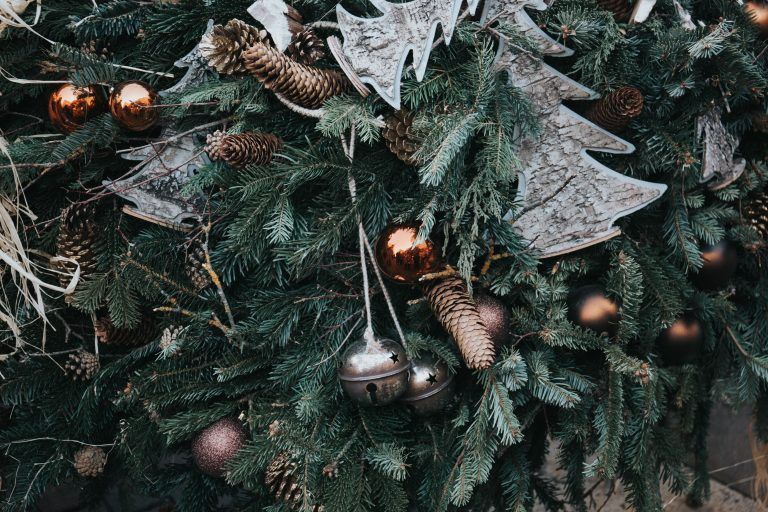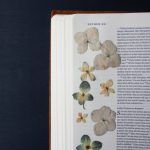
It’s Christmas! Time to put up the tree, hang the wreath on the door and start shopping for the biggest gift-giving season of the year! But, have you ever wondered why we do those things? Maybe the question crossed your mind at some point. The Holy Spirit encouraged me to dig a little into the background of a few of our traditions. Once you see what I discovered, I’m sure you will be as surprised—and ministered to—as I was.
Oh, Christmas Tree!
First, why do we put up a Christmas tree? Originally, the Christmas tree was an evergreen tree and represented the eternal life that Jesus brings. When it is cut down and then put up again, the tree represents the resurrection of our Lord. What about the wreath? The wreath is a circle which represents the eternal, divine love of God, which has no beginning or end. Lovely, isn’t it? When we know what they stand for, mere decorations can serve as a reminder that Jesus truly is the reason behind the season.
The Giving of Gifts
The tradition of gift giving runs deeper in meaning than decorations. It comes from the account of the Magi bringing gifts to Jesus in Matthew 2. Beyond tradition, there is something of great significance in what the wise men gave that deserves investigation. The tradition of gift giving runs deeper in meaning than decorations. It comes from the account of the Magi bringing gifts to Jesus in Matthew 2. Beyond tradition, there is something of great significance in what the wise men gave that deserves investigation. and worship Him. When they had listened to the king, they went their way, and behold, the star which had been seen in the east in its rising went before them until it came and stood over the place where the young Child was. When they saw the star, they were thrilled with ecstatic joy. And on going into the house, they saw the Child with Mary His mother, and they fell down and worshipped Him. Then opening their treasure bags, they presented to Him gifts—gold and frankincense and myrrh (verses 1-5, 8-11, italics added, The Amplified Bible).
Three times in these few verses worship is mentioned. And there were three gifts as well: gold, frankincense and myrrh. How do these gifts connect to worship? They were also the three symbols of worship in the original Temple! Gold has great value that has never depreciated. It has never been worthless. Gold has been the constant mainstay of value. It was certainly a gift suitable for a king. In the first Temple, the vessels and furnishings for worship in the holy of holies were made of gold. The Ark of the Covenant was covered with gold, including the mercy seat where the sacrificial blood was sprinkled. Gold has an eternal quality about it, being found in both heaven and earth.
Your Eternal Quality
What is it about you that’s eternal? Your spirit is eternal. Eternal-ness is in you because God put it in you and it can never be undone. But sin brought a state of death to our spirits. When we bring our gift of worship to Jesus as Saviour, His gift to us is victory over spiritual death through the gift of eternal life. Why frankincense? Frankincense is an aromatic, milky-white resin extracted from trees. It has been touted for its medicinal, soothing, calming, restorative properties, which the ancient world used for treating depression. In the Temple, a frankincense-based incense was burned by the High Priest on the Day of Atonement in the holy of holies. The aromatic smoke would rise from the incense and the presence of the Lord would appear in the midst of the smoke. Revelation 5:8 says the incense of heaven is the prayers of the saints. And Psalm 22:3 tells us God inhabits such praises. Now, put that together with the properties of healing and reversing depression. Jesus not only gives us eternal life for our spirits, but also peace for our minds (Isaiah 53:5). As we bring our gift of worship, our prayers are lifted into the presence of God where we can receive His gift of blessed peace. Then there was myrrh. It is also a highly fragrant resin produced by a small, scraggly tree in North Africa. Yet, it was considered a wound-healer because of its strong antiseptic, anti-inflammatory property. The Chinese have used it medicinally for centuries. In the Temple, myrrh was the main ingredient of the anointing oil. This perfumed oil made anything it touched consecrated and holy to God. The priests were anointed for service with this very special oil. Why, then, would Jesus say in Matthew 26 that the woman who poured the expensive perfume on His head did so as a preparation for His burial? Because the most famous use for myrrh was embalming. In Scripture, it is named as one of the burial spices used to bury Jesus. Jesus was anointed to bear our sins and our sicknesses. Thus, myrrh represents both the death of Jesus and the healing His death made available to us: “By His, wounds you have been made whole” (1 Peter 2:24).
As we bring our gift of worship, beyond salvation for our spirits and peace for our souls, the oil of the Holy Spirit brings healing to our bodies. Gold, frankincense and myrrh. Three gifts. All symbols of the first Temple. Now, we are the temple (1 Corinthians 3:16). So we worship by faith, which is to serve, yield to and recognise His kingship. We recognise Jesus as the Gift given by the Father—the only begotten Son of God—so that anyone who believes can have eternal qualities for his spirit, peace for his soul and healing for his body. The Gift of eternal proportions!
We love you and your family and want to bless you with a free gift, our 2017 KCM Calendar. CLICK HERE to order it now!
Article by Terri Copeland Pearsons taken from BVOV December 12′




